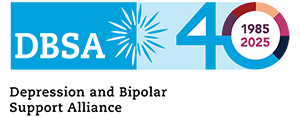The current relationship between law enforcement and the mental health community requires immediate change.
The media headlines and news feeds today seem to be constantly filled with stories of people living with a mental health condition who die, become injured or suffer emotional trauma as the result of a police interaction. Last fall, the death of Walter Wallace, Jr. spurred riots in Philadelphia. Daniel Prude died in Rochester, New York[1] police custody earlier last year, but it was recently announced that no officers will be charged. In January, an unarmed Patrick Warren, Sr. was shot outside his Texas home during a mental health wellness check.
These deaths, though tragic on their own, are not isolated occurrences. According to a study from the U.S. Department of Health and Human Services, 22% of deaths due to the use of lethal force by law enforcement were mental health related. Much of the explanation for this stems from the fact that many law enforcement policies and training do not adequately include crisis intervention and de-escalation training.
Black Americans are at an even higher risk of being caught in the crosshairs of a potentially lethal encounter with law enforcement. The National Institutes of Health notes that Black Americans are 20% more likely than White Americans to experience serious psychological distress. That statistic, when paired with the over-policing of Black communities as a whole, which increases the likelihood of police interactions, led the Bazelon Center for Mental Health Law to note unequivocally that “Black people with mental illness are at great risk of dying at the hands of the police.”
Although it is not a crime to exhibit symptoms of a mental health condition, police are often called involving a person in this situation. Depending on how a mental health crisis is handled, it may lead to a violation of that person’s civil rights. Unless an individual represents an immediate threat to their own safety or that of another individual or property, a police response using force is not the appropriate solution. Even when officers are called and notified that a person has a mental health condition, they often may not have the training or resources to effectively de-escalate the crisis, as was the case for Patrick Warren, Sr.
We must demand a change. Across the country at the federal, state, and local levels, we continue to underfund or shutter programs that provide access to mental health treatment and wellness. Meanwhile, the pandemic has reduced treatment options, increased joblessness, created extended isolation, and produced a secondary mental health crisis as many experience episodes of depression or anxiety for the first time.
As the number of people impacted by mental health conditions grows, our law enforcement agencies have become a catch-all resource for responding to all types of crises though some lack the understanding or tools to respond appropriately. This system continues to fail.
At the Depression and Bipolar Support Alliance, we call on all of our legislators at every level to reinstate and increase funding for mental health treatment and improve access to care.
Along with improving mental health wellness journeys, we call for law enforcement agencies to improve training in at least two areas:
- Expand civil rights training to respect the rights of people with mental health conditions, while providing protection to the community. Living with a mental health condition, even when exhibiting symptoms of illness, does not eliminate a person’s civil liberties.
- Require de-escalation and Crisis Intervention Training for all officers who engage with the community and appoint staff liaisons tasked with building community partnerships to aid in this effort.
There are programs proven to work. Communities across the country have shown that there are more effective solutions. Most prominently, Crisis Intervention Training (CIT) is a certification course that provides training in de-escalation, understanding of how mental health conditions can present, and promotes respect by creating opportunities for police officers to talk with community members who live with mental health conditions. The training is most effective when law enforcement officers create partnerships with local organizations: hospitals, behavioral health centers, libraries, schools, and other local resource organizations.
Illinois has launched several successful programs. In Orland Park, officers have a partnership through their CIT program with a local treatment center that will get in touch with a referral within 48 hours of officer contact. Additionally, police officers follow up after that introduction has been made to ensure that the person in crisis has access to the resources they need, and to cultivate a relationship between police and local families.
In suburban Chicago, the municipality of Park Ridge’s program has been used as a model across the country, noting within their report that “CIT training across ranks and divisions has planted the seeds for a culture in which de-escalation and compassion underlie officers’ expectations of one another in the field.”
Indianapolis, Indiana has also seen success with its Behavioral Health Services Unit. Most police districts have a behavioral health detective who partners with a mental health clinician for support during non-emergency events. Ideally, individuals with mental health conditions should decide whether they require such services. At times, however, a family member will be called upon to make such judgments.
Indianapolis has also led the way with its internal police peer support and mentoring program, designed to reduce stigma and employment penalties, while addressing mental health concerns early for officers.
It cannot be overstated how effective these training programs can be when also complemented by adequate resources provided for those living with mental health conditions. After the 2018 police shooting of Marcus-David Peters in Virginia, Richmond’s police chief commented, “I look at what it would take to become a psychologist, psychiatrist, mental-health counselor — five to eight years of training. Our police department gives our officers 40 hours. Five to eight years, and we get 40 hours.” The Bazelon Center notes that “while increasing police training can improve police responses to people with mental illness, the Richmond police chief’s main point must not be ignored: the fundamental problem is having police, rather than mental health personnel, address the situation.”
At the Depression and Bipolar Support Alliance, we call on all our legislators at every level to increase funding for mental health treatment and improve access to care, and to invest more funding to ensure every law enforcement agency offers adequate training related to civil rights and crisis intervention.
[1] An early version of this document stated that Daniel Prude was in the custody of the New York Police Department instead of the Rochester, New York City Police Department. – 4.27.2021 Source: https://www.nytimes.com/article/what-happened-daniel-prude.html



